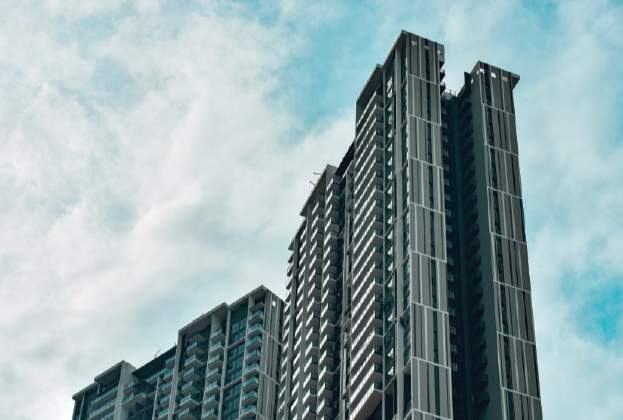New Private Residential Sales Volume Dropped 8.5% Quarter-to-quarter and 11% Year-on-Year
27 November 2023
Savills Research reported new private residential sales volume declined 8.5% in Q3/2023 quarter-to-quarter (QoQ) to 1,946 units. This was following two consecutive quarters of increase, despite the increase in launched units in Q3. On a year-on-year (YoY) basis, it was 11.0% lower.
This could be due to buyers’ selectivity to the high interest rate environment which might had caused them to choose their project with greater scrutiny. 49.7% of the new sales came from the Rest of Central Region (RCR). However, as there were fewer units launched on a QoQ basis in the market segment, this was a 38.5% quarterly decrease from the 1,573 units in the previous quarter.
Notwithstanding more units being launched in the Core Central Region (CCR), new sales in that market segment fell 43.1% QoQ to 253 units. The CCR had appeared to be affected by the recalibration of the cooling measures and the increased scrutiny evident from the billion-dollar money laundering cases. On the other hand, new sales in Outside Central Region (OCR) surged from 109 units in Q2/2023 to 725 units in Q3/2023, the highest since Q3/2022, when suburban new sales amounted to 1,244 units. Nevertheless, on a YoY basis, this was still a decline of 41.7%.
Secondary sales also decreased, albeit at a sedated pace of 0.2% to 3,255 units. On a YoY basis, secondary sales continued to trend downwards by a smaller 17.8%, as compared to the 26.1% in the previous quarter. In the third quarter, secondary sales in both the CCR and RCR fell by 2.7% and 7.5% QoQ to 535 units and 963 units respectively. For the OCR, secondary sales continued to increase for the second consecutive quarter by 5.2% QoQ to 1,757 units.
Due to the high Additional Buyer’s Stamp Duty (ABSD) rates that foreigners (those without permanent residency) must pay, their purchases of non-landed homes fell significantly to 82 units, the lowest since Q1/1998 when foreigners acquired 68 homes, down 60.4% from the 207 recorded in Q2/2023. This was even lower than the sales volume during the Covid-19 pandemic when international borders were closed, and travel restrictions were imposed. Non-landed home purchases by permanent residents (PRs) and locals also declined, albeit at a much slower pace of 4.5% and 8.0% QoQ, to 784 units and 3,751 units respectively in the quarter. URA property index of all private residential properties rebounded with an increase of 0.8% QoQ in Q3/2023. This was a turnaround after a marginal decline of 0.2% QoQ in Q2/2023. On a YoY basis, it was 4.4% higher. The quarterly growth in residential prices was attributed to a 2.2% rise in non-landed home prices, a reversal from the 0.6% contraction in the previous quarter. On the other hand, prices of landed homes recorded its first QoQ decline of 3.6% after eight consecutive quarters of increase.
In the non-landed segment, prices in the city-fringe and suburban areas (ie. RCR and OCR) strengthened in the quarter, increasing by 2.1% and 5.5% QoQ respectively. This came after a decline of 2.5% for RCR homes and a smaller increase of 1.2% for OCR homes. The increase in prices of non-landed homes in these two market segments might be due to more new launches in the quarter. However, for CCR, after a slight dip of 0.1% in Q2/2023, prices of non-landed homes decreased for the second consecutive quarter by a larger 2.7% QoQ in Q3. The higher (ABSD) rates and the dragnet on money launderers could have dampened market sentiments and also deterred foreigners from buying (often in prime locations) for now.
For the basket of luxury non-landed private residential projects tracked by Savills, the price increase had slowed. Nevertheless, prices of luxury non-landed homes in the Savills’ basket rose for the 12th consecutive quarter by 0.4% QoQ to S$2,601 psf in Q3/2023.
With transaction volume of such homes slowing down and weakening market sentiments particularly for this target market, prices of luxury homes are expected to decline in accordance in the subsequent quarters.
Alan Cheong, Executive Director, Research & Consultancy, Savills Singapore: “For next year’s launches, the market will be more discerning, gravitating towards projects with a few key attributes.”
Projects which have the following characteristics are likely to perform better:
- Being the first major launch in the sub-zone after a 5 year or longer period;
- Located near public transportation nodes;
- Located within a kilometre of popular schools and/or amenities;
- Executive Condominiums.
Buyers will be more price-sensitive to projects with these less appealing characteristics:
- Projects in an area which has been saturated with previous launches over the past few years;
- No unique selling features eg; not being near popular schools and transportation hubs.
George Tan, Managing Director, Livethere Residential: “Revenge buying manifested itself in 2022 and the momentum followed through to Q1 and, for some projects, into Q2/2023. However, while prices could continue to rise, the air is getting thinner.”
While new sales numbers are expected to fall from 7,099 units in 2022 to about 6,500 units in 2023, and resales from 14,026 units to about 11,300 units over the same period of comparison, prices are still expected to rise this year. The price increase for 2023 is driven mainly by cost push pressures as the land on which these projects are derived from were purchased in 2021 and 2022 period where land prices were rising.
The initial forecast of a 7% YoY price increase for 2023 maintains while prices are expected to remain flat in 2024.



(1).jpg)